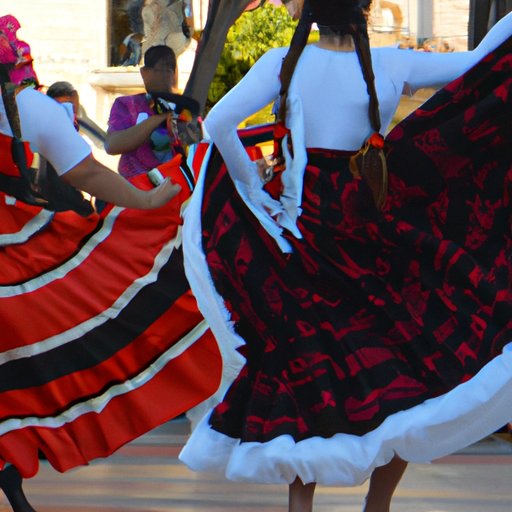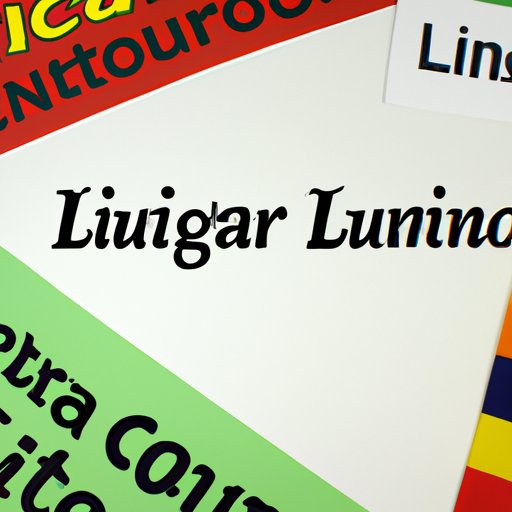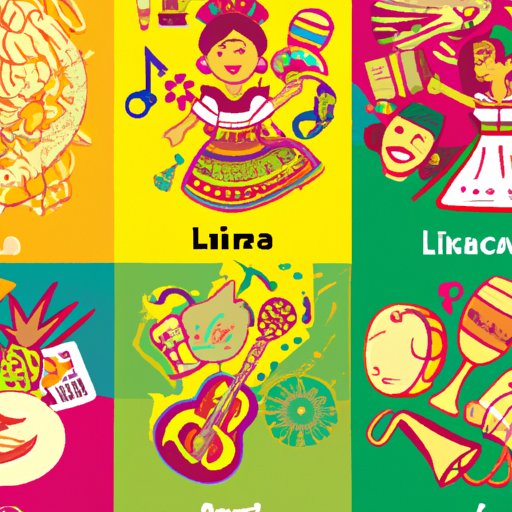Introduction
The term “Latino” is used to refer to people from Latin America, including Mexico, Central and South America, and the Caribbean. While this term is often used to describe a shared heritage and experiences, it is important to recognize that there is no single “Latino” culture. Instead, Latino culture encompasses many different cultures, languages, and traditions that have evolved over time. This article will explore the history and traditions of Latino culture, analyze its impact in the United States, examine the different types of Latino culture, investigate the relationship between language and Latino culture, and explore the political and social issues faced by Latinos today.

Exploring the History and Traditions of Latino Culture
Latino culture has its roots in both pre-Colombian indigenous cultures and Spanish colonization. Pre-Colombian cultures such as the Aztecs, Mayans, and Incas had complex systems of government, art, and language. These cultures were largely wiped out by Spanish colonization, but their influence can still be seen in modern-day Latin American cultures. Spanish colonization also had an immense impact on the region. Spanish colonizers brought with them their language, religion, and customs, which were adopted by the native populations and mixed with their own traditions.
In the 19th and 20th centuries, millions of immigrants from Latin America came to the United States in search of economic opportunities. This wave of immigration led to the growth of Latino communities throughout the country. These communities brought with them their language, music, food, and religious practices, which have since become integral parts of American culture.
Analyzing the Cultural Impact of Latinos in the US
The influence of Latino culture in the United States can be seen in many aspects of American life. The most obvious example is language. Spanish is the second most spoken language in the United States, and is widely used in business, media, and other aspects of everyday life. Additionally, many English words have been adopted from Spanish, such as taco, siesta, and patio.
Music has also been heavily influenced by Latino culture. From salsa to reggaeton, many popular genres of music are rooted in Latino culture. Food is another area where Latino culture has had an impact. Dishes such as tacos, burritos, and enchiladas are now staples of the American diet. Finally, the Catholic Church, which was introduced by Spanish colonizers, is the largest denomination in the United States.

Examining the Different Types of Latino Culture
While there is no single “Latino” culture, there are several distinct cultural regions within Latin America. Central American countries such as Guatemala, Honduras, and El Salvador have their own unique cultures, with a mix of indigenous, Spanish, and African influences. South American countries like Brazil, Argentina, and Peru have a strong European influence, while Caribbean countries such as Cuba, Puerto Rico, and the Dominican Republic have a mix of European, African, and indigenous influences.

Investigating the Relationship Between Language and Latino Culture
Language plays an important role in preserving and expressing Latino culture. For many Latinos, speaking Spanish is a way to connect with their cultural heritage. It is also a tool for preserving traditional cultural practices and passing them down to the next generation. Additionally, speaking Spanish is an expression of identity and pride for many Latinos. In many immigrant families, speaking Spanish is a way to maintain their cultural ties to their homeland.
Exploring the Political and Social Issues Faced by Latinos Today
Despite their significant contributions to American society, Latinos continue to face discrimination and inequality. Latinos are more likely than other groups to face poverty, lack of access to healthcare, and educational disparities. Additionally, immigration continues to be a contentious issue in the United States, with many immigrants facing harsh treatment and deportation.
Conclusion
Latino culture has a rich and diverse history, with influences from both pre-Colombian indigenous cultures and Spanish colonialism. This culture has had a major impact on the United States, from language and music to food and religion. There are several distinct cultural regions within Latin America, each with its own unique traditions. Language plays an important role in preserving and expressing Latino culture, and is an expression of identity for many Latinos. Despite their significant contributions to American society, Latinos continue to face discrimination and inequality. It is important to recognize and celebrate the diversity of Latino culture and work to create a more equitable society for all.
(Note: Is this article not meeting your expectations? Do you have knowledge or insights to share? Unlock new opportunities and expand your reach by joining our authors team. Click Registration to join us and share your expertise with our readers.)
